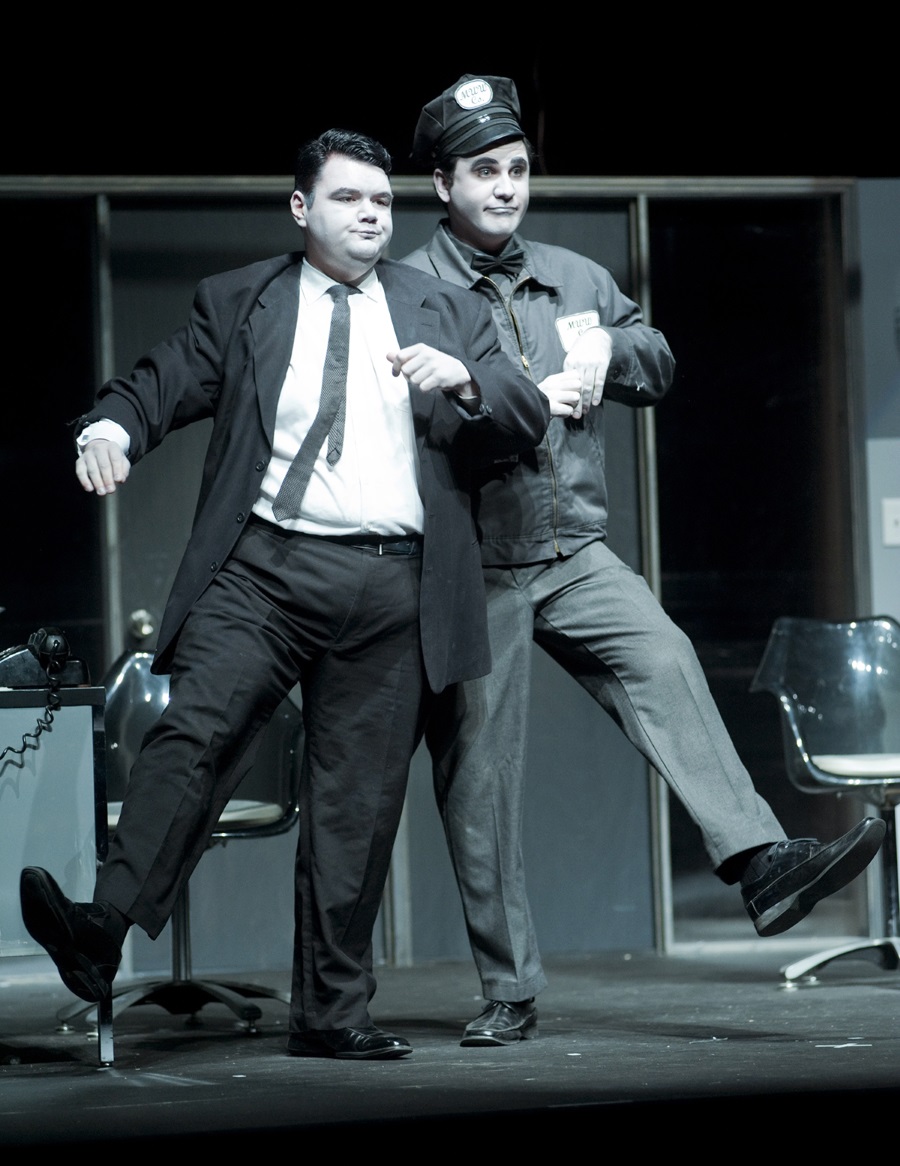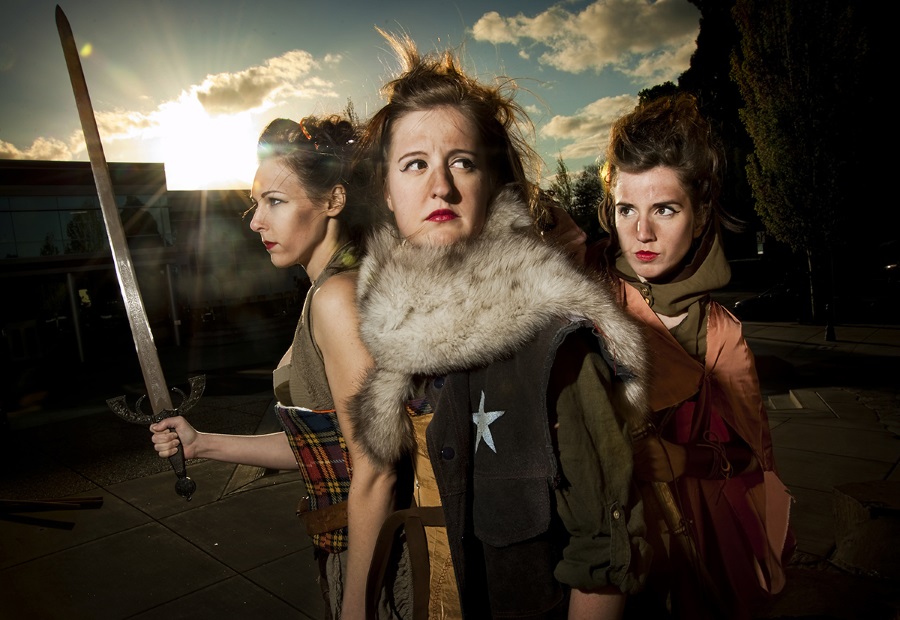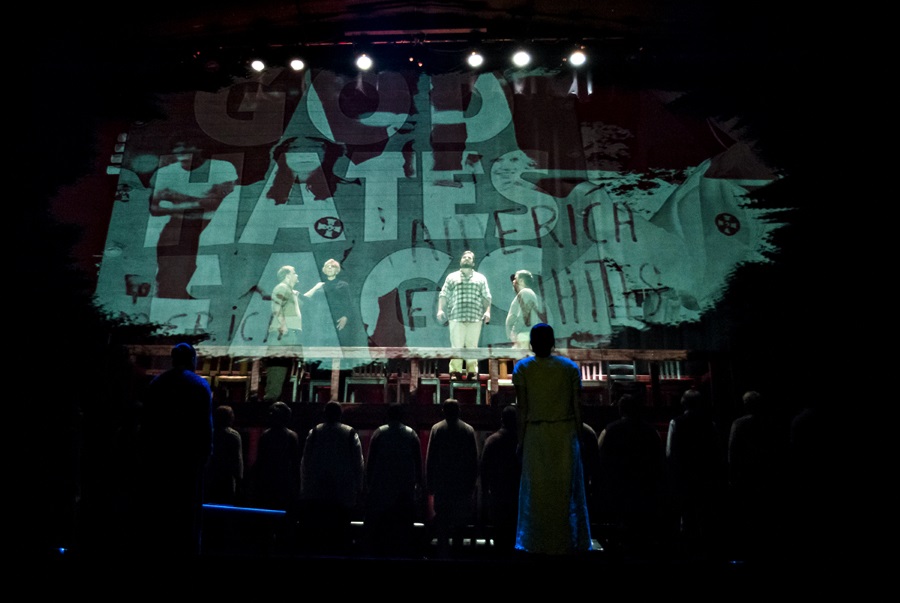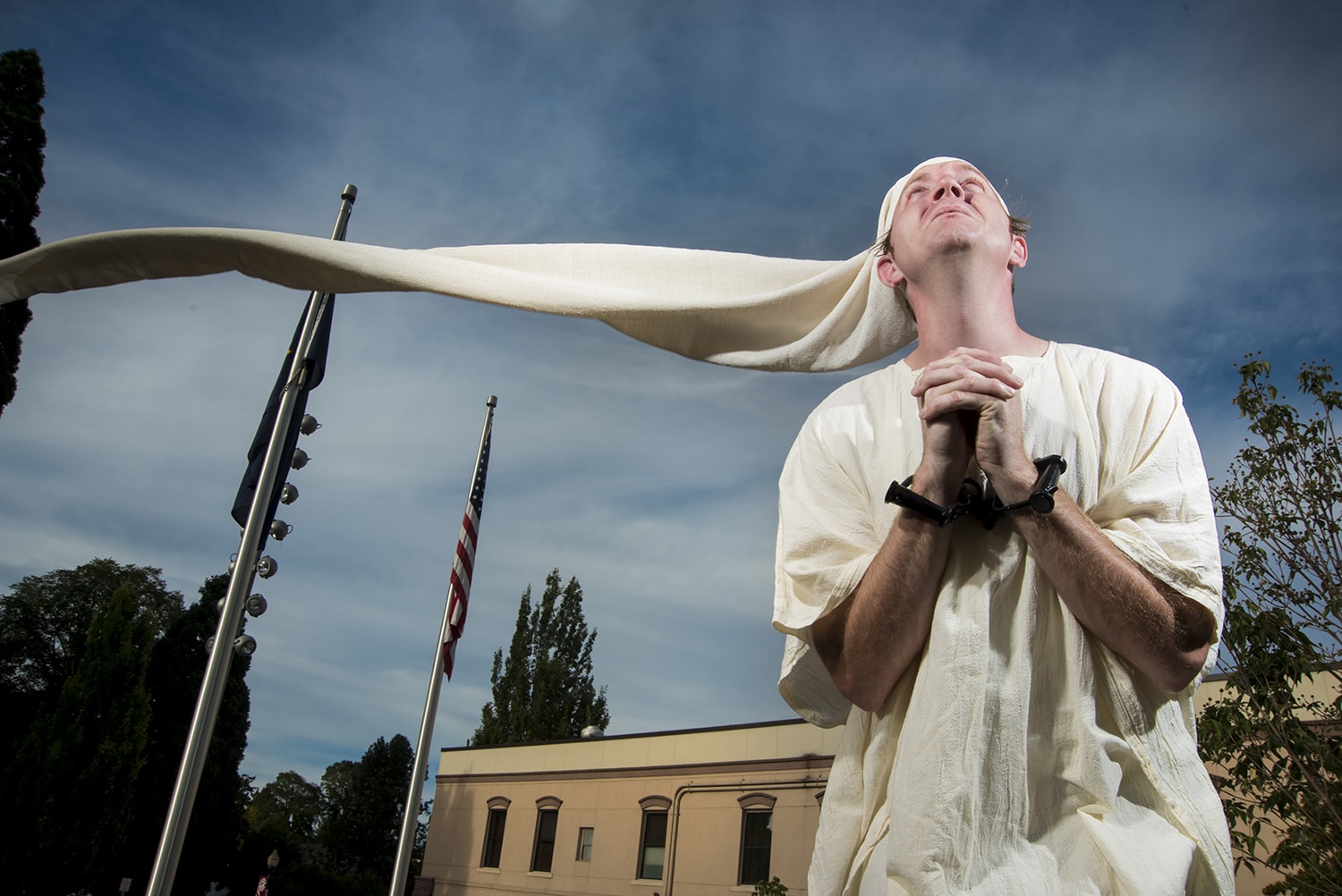
Know a Theatre: Bag&Baggage of Hillsboro, Ore.
Wildly and deeply inventive takes on the classics, and a commitment its suburban community, mark this small 10-year-old company.
HILLSBORO, ORE.: Bag&Baggage roamed the Beaver state bringing entertainment to agrarian communities before settling into the historic 400-seat Venetian Theatre in 2008. The company has since become the largest nonprofit arts organization in the Portland suburb of Hillsboro, selling more than 15,000 tickets annually for unique seasons of literary classics, staged source materials, and provocative adaptations of English and American dramas. We spoke to artistic director Scott Palmer via email to learn a bit more about B&B’s innovative approach to classical texts and the scope of theatre rural-ish Oregon.
Who founded Bag&Baggage, when, and why?
Bag&Baggage was founded in 2005 by a small group of theatre colleagues who were eager to explore classical texts in nontraditional ways, particularly in communities across Oregon without access to professional theatre. In the first few years of the company, these artists would travel from small town to small town with everything we needed in our “bags and baggage,” producing work like Shakespeare’s Macbeth and Dickens’s A Christmas Carol. In 2008, after performing in our artistic director’s hometown in found spaces a few times, we were approached by the city of Hillsboro to discuss doing a single show at the soon-to-be-opened and recently refurbished Venetian Theatre. A former vaudeville space, the Venetian had undergone a major $5-million refurbishment, and we were the first theatre company to perform on the newly rebuilt stage. After one performance, we were asked to become the resident company at the Venetian, and we’ve been producing a six-show season ever since.
Tell us about yourself and your connection to the theatre.
I’m the founding artistic director of B&B. My training as a director started in the U.K., in Glasgow, where I worked for Glasgow Repertory Company for six years as the artistic director. During that time, I had the great freedom and privilege of exploring the works of Shakespeare in provocative ways, and discovered my own academic and artistic interest in adaptations and source materials. When I moved home to the states, I flailed around for a few years trying to find a theatre that would let me muck around with Shakespeare as much as I wanted to but…alas…no one took me up on the offer, so I started my own.

What sets your theatre apart from others in your region?
B&B is one of the only theatre companies in the region, if not the U.S., with a focus on literary adaptations of classical work. What do we mean by literary adaptations?
First, we focus heavily on the literature that often inspired the great classics of Western drama—the original source materials Shakespeare relied upon when writing his work, for example. Our adaptations often include those source materials; for example, text from Arthur Brooke’s Tragicall Hystorye of Romeus and Juliet and William Painter’s The Palace of Pleasure were included and performed in our production of Romeo and Juliet. We believe strongly that the literature that inspired these playwrights can continue to inspire contemporary artists, and help to frame and illuminate these great plays in new and surprising ways.
Second, we are fascinated by other, lesser-known adaptations of these classic works, particularly those from the English Restoration. In the past, we have produced little known (or nearly lost) adaptations of Shakespeare by John Dennis including The Amorous Adventures of The Comical Knight Sir John Falstaff, and Dryden and Davenant’s The Tempest, or The Enchanted Isle, and the never-performed anonymous adaptation of Love’s Labour’s Lost called The Students. We also adapted Shakespeare’s Taming of the Shrew alongside Fletcher’s lesser-known sequel, The Woman’s Prize, into a single play, allowing our audiences to see Shakespeare’s beginning and Fletcher’s response in a single night.
Third, when not able to adapt the works, we work hard to stage them in challenging, unique, or provocative ways—including, for example, a stripped-down/nearly empty stage version of Simon Levy’s The Great Gatsby or Arthur Miller’s The Crucible, with major sections of the play performed in complete darkness or using projections of modern-day images of religious persecution. We also explore these traditional texts through nontraditional casting, including having produced a number of all-female cast Shakespearean adaptations. We do not see these scripts as museum pieces; rather, they are living, breathing texts that can (and should) be explored in new and innovative ways.

Who is your audience?
Primarily, our audience consists of residents of Western Washington County, a suburban part of Portland, including Hillsboro. Hillsboro is a fast-growing suburb of Portland, with a history of being largely agricultural. Our audiences come from Hillsboro, but also from communities west of our hometown—communities with little to no access to professional performing arts of any kind. We try to honor our roots by continuing to connect our work to communities without access to professional performing arts.
Tell us about your favorite theatre institution other than your own, and why you admire it.
Our two main inspirations (the companies we want to be when we grow up) are Woolly Mammoth in D.C. and Steppenwolf in Chicago. Fearless, provocative, grounded in craft and the heritage of our art form—these two companies represent to us a kind of aggressive creativity, a demand to be heard and seen and considered, tempered by a respect for both the work and their audiences. We are inspired by them and their work daily.

How do you pick the plays you put on your stage?
Because we focus on the classics of English and American drama, our seasons follow a straightforward schedule: an outdoor Summer Shakespeare, an American Classic, a Halloween-themed show, a holiday show, another classic (usually an adaptation of Shakespeare), and an English classic. Working with our resident actors and artists, our artistic team pulls together suggestions for texts based on our own interests and the issues and themes of relevance to us at the time. We also explore the seasons and works that our colleague theatres are producing across the country, and look for ways to connect our work to contemporary issues. For example, our selection of The Cruciblewas hugely influenced by the ongoing religious intolerance and violence being experienced throughout this country. We debate, cajole, lobby, threaten, and flatter until, ultimately, I make the final decision—a kind of “benevolent dictatorship,” if you will.
What’s your annual budget, and how many artists do you employ each season
We are a small but growing suburban theatre company with a budget just over $500,000. We have a group of 10 resident actors and a group of 4 resident artists (designers) that we work with consistently, in addition to the occasional guest artist to help fill out our casts.
What show are you working on now? Anything else in your season that you’re especially looking forward to?
Currently, we are working on a major adaptation of Richard III, which we are calling Richard III, The Comedy—a highly stylized exploration of Shakespeare’s great villain king from Richard’s perspective. What does the world look like to King Richard? Which world would our audiences rather live in: the real one or Richard’s? We are also eager to get started, in January of 2016, on Orson Welles’s remarkable adaptation of the Herman Melville classic Moby Dick, Rehearsed, and are especially excited to be (we think!) the first company to get permission to cast the role of Ahab as a woman.

Strangest or funniest thing you’ve ever seen (or put) on your stage?
No question: David McGillivray and Walter Zerling Jr.’s Farndale Avenue …Christmas Carol, with four guys and one woman in drag, including an impromptu performance of Riverdance by a 6’ 4” tall man in 4-inch heels…with inflatable adult blow-up dolls. Yeah, we went there.
What are you doing when you’re not doing theatre?
I don’t understand the question. Is there a time when people aren’t doing theatre? I’m confused.
What does theatre—not just your theatre, but the American or world theatre—look like in, say, 20 years?
We are optimists by nature, which is why we think American theatre looks great in 20 years. More diversity in both those watching and those performing onstage. More equity in terms of representation of women’s voices, people of color’s voices, voices of the economically disadvantaged, and queer voices. Stronger connections between the work of theatre and the lives of our community, better wages for artists, and a clear sense of grappling with both the classic works of our history and the new works of the moment. We have seen a true outpouring of support for our work from our community, and we hope, as American theatre (and world theatre) continues to evolve that we think more and more carefully about the ways we can grow and produce theatre in all manner of communities, not just large cities and urban areas. Those of us in suburban and rural areas are just as hungry, just as eager, just as talented as our brothers and sisters in “the big city,” and we believe that as we reflect the concerns and lives of our neighbors, our neighbors will show their support by becoming patrons.

Leave a Reply